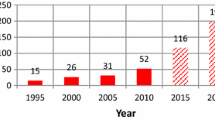Summary
The construction of settlements is influenced in several areas by groundwater, beside the presence and quality of which the formation in time of the water level is the most important factor. The analysis of the regularities of groundwater flows, the preestimation of the natural effects and their modification depending on the builtup area depend on the quantity and quality of the observations. The data and data series available assure precise control methods which, with the method of the hydrological statistics, makes the evaluation of the position of groundwater of the given area possible, and makes also possible to elaborate standard water levels and their frequency.
The study provides as a function of the data available the variables re;ated to the evaluation of the groundwater situation. Building hydrological control can be effected expediently according to the phases of geological research, when as a function of the number of the observation points and especially of the increase in the observation time, more and more precise preestimate can be given about the expected waterflows of the given area. The principles elaborated as a consequence summarize the expedient execution of building hydrological control in separate phases. The phases in question not only represent the principle of gradualness, but correspond to the requirements in connection with the detail of the engineering geological mapping and to the pace of the preparatory work before construction.
Résumé
La construction de nouvelles agglomérations est, dans plusieurs régions, influencés par l'eau souterraine: sa présence, ses qualités, la formation temporaire du niveau hydrostatique. L'analyse des régularités des écoulements des eaux souterraines, et la prévision de leurs effets naturels et de leurs modifications en fonction de la surface bâtie, dépendent de la quantité et de la qualité des observations. Les données et les séries de données disponibles permettent des méthodes précises de contrôle qui, avec l'aide des statistiques hydrologiques, permettent d'évaluer la position des eaux souterraines et les variations du niveau hydrostatique dans une région.
L'étude donne les variables relatives à l'évaluation de la situation de l'eau souterraine en fonction des données disponibles. le contrôle hydrologique d'un bâtiment peut être effectué rapidement en accord avec les phases de la recherche géologique, lorsque, en fonction du nombre de points d'observation et spécialement en fonction de la croissance du temps d'observation une prévision de plus en plus précise peut être donnée sur les écoulements d'eau que l'on peut attendre dans une certaine région. Les principles élaborés en conséquence détaillent l'exécution pratique d'un contrôle hydrologique du bâtiment en phases séparées. Ces phases ne correspondent pas seulement à la nécessité d'une gradation, mais correspondent aux conditions qu'impose la cartographie géotechnique détaillée et à la cadence du travail préparatoire à la construction.
Similar content being viewed by others
Author information
Authors and Affiliations
Rights and permissions
About this article
Cite this article
Karácsonyi, S., Bernáth, Z. Guiding principles for the preparation of hydrological maps for building. Bulletin of the International Association of Engineering Geology 19, 237–241 (1979). https://doi.org/10.1007/BF02600481
Published:
Issue Date:
DOI: https://doi.org/10.1007/BF02600481




